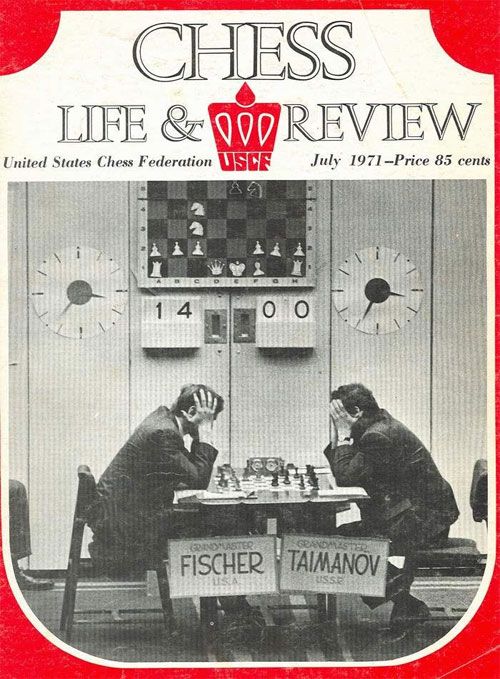The old riddle of Fischer vs Taimanov
The endgame of the fourth game of the famous Candidates match of Vancouver 1971 is very instructive. But one question has remained puzzling. Was the adjourned position already lost or was Taimanov's 42nd move a decisive mistake? Once again we invite you to debate this question with leading endgame experts, including our own GM Karsten Müller. With the help of chess engines you can win the analytical duels and show them where history needs to be corrected. Photo: ChessBase

Five months after the Palma de Mallorca Interzonal (1970) qualifier, the quarterfinals of the Candidates Matches were held. American GM Bobby Fischer faced the experienced Soviet star Mark Taimanov in a ten-game match, which was held in in Vancouver, Canada.
The first game was a very tense fight, but Taimanov was shaken by a mistake on his 36th move. The second game was adjourned several times in drawn positions. But after losing the third game due to a mistake in the 20th move, which continued to haunt him for days and nights to come, Taimanov also lost the dead-drawn adjournment of the second game, and so he was already shaken when the fourth game started.
Later Taimanov said: "Until the match with Fischer in 1971, everything went smoothly in my chess career. This dramatic match changed my life into hell. The sanctions from the Soviet government were severe. I was deprived of my civil rights, my salary was taken away from me, I was prohibited from travelling abroad and censored in the press. It was unthinkable for the authorities that a Soviet grandmaster could lose in such a way to an American, without a political explanation. I therefore became the object of slander".
The adjournment of game four was a great disappointment for the Soviet grandmaster. But the position remains a mysterious riddle even today. What had the mighty Soviet analysts missed that led to the mistake 42...Kd8? Was the adjourned position not lost?
When preparing for the presentation of the book Bobby Fischer, The Career and Complete Games of the American World Chess Champion in the Max Euwe Center in Amsterdam, I had to select a few positions to show the audience. One I used was the following famous classic, with the typical material constellation for the Fischer endgame — rook and strong bishop vs rook and knight:
Endgame literature generally considers this position to be already lost for Black, but Charles Sullivan had drawn my attention to an interesting defensive try. Instead of the game move 42...Kd8? allowing the exchange of rooks, when White's king will penetrate slowly but surely by using the sharp endgame weapon zugzwang again and again, Andrew Soltis had suggested 42...Rf6.
We need your help
This is where we want to enlist your help. Does Andrew Soltis new defence 42...Rf6 draw or can you show a winning line for White? Is the adjourned position already lost? What had the Soviet analysts missed? Did Bobby prove a win after the rook exchange (after 43.Rd3)?
I am interested to see if a reader will create a major sensation by finding a drawing proof after the rook exchange. But of course the most intriguing question is whether the adjourned position was already lost in all cases or not. This is still a borderline question even for the modern engines, and I am curious if a drawing proof or a winning proof will win the analysis competition.
By the way: I think that the adjourned position is won anyway, but of course I am not 100% sure. So I need your help!
You probably know that in our replay boards there are a large number of functions you can use to really appreciate the games. Recently we published a comprehensive tutorial on how to get the most out of the live broadcast game viewer. Learn about all the powerful features and buttons that make the ChessBase's replay one of the best watching experiences around.
One big advantage is that you can start an engine (fan icon) that will help you to analyse. You can get multiple lines of analysis by clicking the + button to the right of the engine analysis window. The "!" key, incidentally, shows you the threat in any position, which is incredibly useful in the case of unclear moves.

There is one more thing you can do. It is a lot of fun, but also a serious challenge: Click on the rook icon below the notation window. This will allow you the play the above position against Fritz, at your level of playing strength (e.g. "Club Player"), right here on the news page. Note that your analysis, in which you can delete, move or promote lines, is stored in the notation as new variations. In the end you will find the game with your analysis in the cloud. So nothing is ever lost.
About the Author

Karsten Müller, born 1970, has a world-wide reputation as one of the greatest endgame experts. He has, together with Frank Lamprecht, written a book on the subject: “Fundamental Chess Endgames” in addition to other contributions such as his column on the website ChessCafe as well as in ChessBase Magazine. Müller's ChessBase-DVDs about endgames in Fritztrainer-Format are bestsellers. The PhD in mathematics lives in Hamburg, where he has also been hunting down points for the HSK in the Bundesliga for many years.



